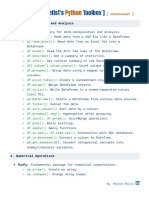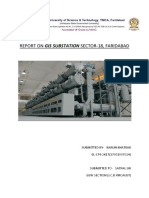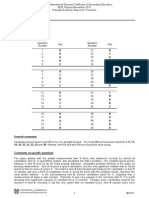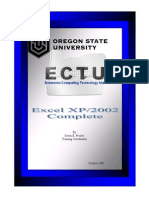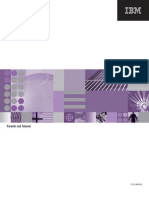0% found this document useful (0 votes)
10 views7 pagesEssential Python Libraries For Data Science 1694045951
The document outlines essential Python libraries for data science, categorized by their functions such as data manipulation, visualization, statistical analysis, and machine learning. Each category includes the library name, its importance, and additional resources for learning. Notable libraries mentioned include Pandas, Matplotlib, Scikit-learn, TensorFlow, and PySpark, among others.
Uploaded by
sriroop23Copyright
© © All Rights Reserved
We take content rights seriously. If you suspect this is your content, claim it here.
Available Formats
Download as PDF, TXT or read online on Scribd
0% found this document useful (0 votes)
10 views7 pagesEssential Python Libraries For Data Science 1694045951
The document outlines essential Python libraries for data science, categorized by their functions such as data manipulation, visualization, statistical analysis, and machine learning. Each category includes the library name, its importance, and additional resources for learning. Notable libraries mentioned include Pandas, Matplotlib, Scikit-learn, TensorFlow, and PySpark, among others.
Uploaded by
sriroop23Copyright
© © All Rights Reserved
We take content rights seriously. If you suspect this is your content, claim it here.
Available Formats
Download as PDF, TXT or read online on Scribd
/ 7
